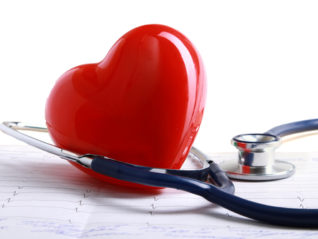
A thought-provoking article in the July 22, 2016 Issue of Science posed the question “Is triclosan harming your microbiome”?1 The article concludes that the data is still mixed about the effects of triclosan on the microbiome, but begs some broader questions such as, “what is triclosan?” and “are there safety risks associated with it?”
Triclosan, 2,4,4’ –trichloro-2’-hydroxydiphenyl ether, is a synthetic, broad-spectrum, antibacterial and antifungal agent found in many oral and topical body care products, cosmetics, and even plastic toys, clothing and furniture. In toothpaste, antibacterial soaps and body washes, triclosan is considered an over-the-counter drug and is regulated by the Food and Drug Administration (FDA).2 Also regulated by the Environmental Protection Agency (EPA) as an antimicrobial pesticide, “triclosan is used as a preservative in industrial, institutional, and residential settings to protect items from odor and stain-causing bacteria, fungi, mold, and mildew”.3
Used liberally for decades by many industries, triclosan can be found ubiquitously in us and around us. In a National Health and Nutrition Examination Survey (NHANES) study published in 2008, 75% of twenty-five hundred adults and children in the US general population tested positive for triclosan in their urine.4 Triclosan also permeates our waterways; in a survey of 139 streams in 30 US states, 57.6% tested positive for triclosan.5 It is a common drinking water contaminant.6
Triclosan is everywhere, but is it harmful? At this point, the scientific community hasn’t yet reached a firm consensus, but there is increasing evidence that it MAY be harmful. Triclosan is absorbed through the skin and oral cavity into the bloodstream. In addition to blood and urine, breast milk may contain triclosan; levels correlate to use by consumers.7
Although not considered acutely toxic, triclosan poses several health concerns. It acts as an endocrine disruptor and has androgenic and antiestrogenic activities.8 A study in sub-fertile men showed that urinary triclosan levels were associated with increased luteinizing hormone (LH) levels, which the authors speculated may negatively affect Leydig cell function.9 Structurally similar to thyroxine, triclosan may disrupt thyroid hormone homestasis.7 Animal studies have demonstrated that triclosan decreases blood levels of T4; unfortunately, data in humans is lacking.7 A review suggested that it may play a role in cancer development due to xenoestrogenic activity and a rodent study demonstrated that triclosan promotes liver tumoriogenesis.10,11
Triclosan may negatively alter the microbes in our guts and our environment. Another rodent study showed that triclosan disrupted the gut microbiome and reduced the Firmicutes/Bacteroidetes ratio.12 A major public health concern, microbial resistance to triclosan and cross-resistance to additional antimicrobials have been demonstrated.13
In 2010, a petition to ban triclosan was submitted to the EPA by over 80 consumer and environmental advocacy groups. In it, the petitioners cite several concerns regarding the impact of triclosan on human health and the environment.3 The same year the petition was submitted, the EPA announced their intention to “accelerate the schedule” for the triclosan registration review process to begin in 2013, “ten years earlier than originally planned”.14 In 2015, five years after the petition was submitted, the EPA responded that they would not be cancelling the registration of triclosan, but that they are “currently engaged in reevaluating the risks posed by triclosan including a review of the human health and ecological risks”.
Since at least 2013, the FDA and EPA have taken the position that they are “closely collaborating on science and regulatory issues related to triclosan”.15 The position of the Centers for Disease Control and Prevention (CDC) is that “human health effects from exposure to low environmental levels of triclosan are unknown”.16 Unfortunately, it may take years before our public health policymakers are in a position to make recommendations regarding the safety of triclosan.
In the meantime, studies have shown that triclosan-containing soaps do not have significantly increased efficacy over non-“antimicrobial” soaps.13 Additionally, a Cochrane Review concluded that the benefit of adding triclosan to toothpaste to reduce gingivitis may not even be clinically meaningful.17
With questionable health benefits, unknown long-term health effects, and mounting evidence that it may do more harm than good, you may want to advise your patients to reduce their exposure to triclosan and that of their families by carefully checking the labels of toothpastes, mouthwashes, body care products, hand soaps, and other products, especially if they are labelled as “antibacterial.”
- Yee BAL, Gilbert JA. Is triclosan harming your microbiome? 2016;(June).
- Triclosan: What Consumers Should Know. http://www.fda.gov/forconsumers/consumerupdates/ucm205999.htm. Accessed July 27, 2016.
- EPA Responds to Citizen Petition for a Ban on Triclosan. https://www.epa.gov/pesticides/epa-responds-citizen-petition-ban-triclosan.
- Calafat AM, Ye X, Wong L, Reidy JA, Needham LL. Urinary Concentrations of Triclosan in the U . S . Population : 2003 – 2004. 2008;116(3):2003-2004.
- Kolpin DW, Meyer MT. Pharmaceuticals , Hormones , and Other Organic Wastewater Contaminants in U . S . Streams , 1999 – 2000 : A National Reconnaissance. 2002;36(6):1202-1211.
- Bedoux G, Roig B, Thomas O, Dupont V, Bot B Le. Occurrence and toxicity of antimicrobial triclosan and by-products in the environment. 2012:1044-1065.
- Dann AB, Hontela A. Triclosan : environmental exposure , toxicity and mechanisms of action. 2011;(September 2010):285-311.
- Kravchenko J, Corsini E, Williams MA, et al. Chemical compounds from anthropogenic environment and immune evasion mechanisms : potential interactions. 2015;36:111-127.
- Hond E Den, Tournaye H, Sutter P De, et al. Human exposure to endocrine disrupting chemicals and fertility : A case – control study in male subfertility patients. Environ Int. 2015;84:154-160.
- Dinwiddie MT, Terry PD, Chen J. Recent Evidence Regarding Triclosan and Cancer Risk. 2014:2209-2217.
- Chen S, Evans RM, Hammock BD, et al. The commonly used antimicrobial additive triclosan is a liver tumor promoter. 2015;112(48).
- Hu J, Raikhel V, Gopalakrishnan K, et al. Effect of postnatal low-dose exposure to environmental chemicals on the gut microbiome in a rodent model. Microbiome. 2016:1-11.
- Giuliano CA, Rybak MJ. Efficacy of Triclosan as an Antimicrobial Hand Soap and Its Potential Impact on Antimicrobial Resistance : A Focused Review. 2015. doi:10.1002/phar.1553.
- Pesticides: Reregistration: Triclosan Facts. https://archive.epa.gov/pesticides/reregistration/web/html/triclosan_fs.html. Accessed July 27, 2016.
- FDA Taking Closer Look at “Antibacterial” Soap. http://www.fda.gov/ForConsumers/ConsumerUpdates/ucm378393.htm. Accessed July 27, 2016.
- National Biomonitoring Program: Factsheet: Triclosan. http://www.cdc.gov/biomonitoring/Triclosan_FactSheet.html. Accessed July 27, 2016.
- P R, T. L. Triclosan/copolymer containing toothpastes for oral health. Cochrane Database Syst Rev. 2013.





